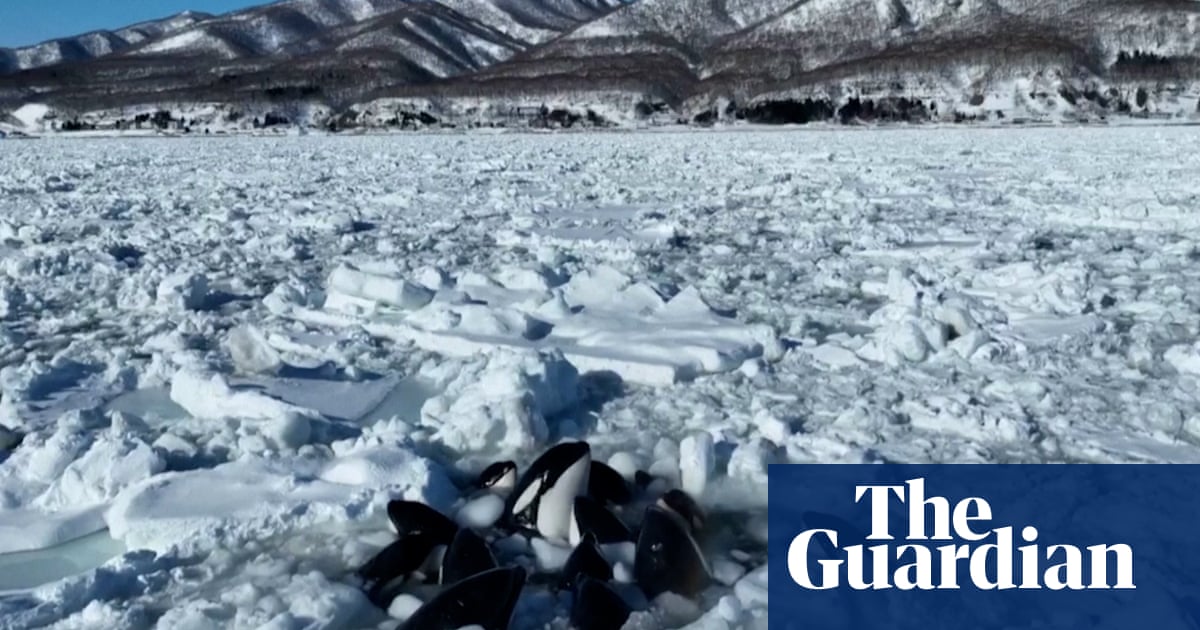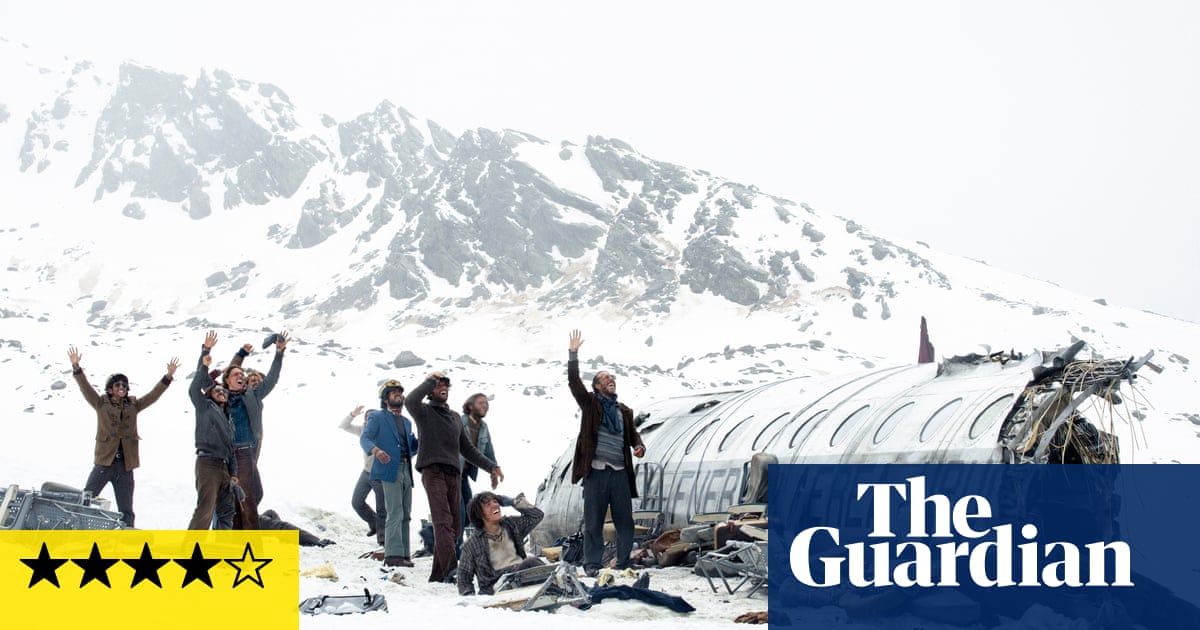
Concern is growing for the welfare of a pod of killer whales that appear to have become trapped in drift ice off the coast of Hokkaido in northern Japan.
Footage aired by the public broadcaster NHK on Tuesday showed at least 10 orcas poking out of a small gap in the surface of the water about 1 km off the coast of Rausu on the Shiretoko peninsula – a Unesco world heritage site famed for its abundant wildlife.
The town said the thick ice had made it impossible for the coast guard, which had been alerted by a fisher, to attempt to free the mammals. “We have no choice but to wait for the ice to break up and for them to escape that way,” a Rausu official told NHK.
Seiichiro Tsuchiya, a marine life expert who filmed the stricken animals using a drone, told the broadcaster he noticed the pod while conducting research into the local sea lion population.
“I saw about 13 killer whales with their heads sticking out of a hole in the ice,” he said. “They seemed to be struggling to breathe, and it looked like they included three or four calves.”
The largest cetaceans can spend long periods underwater, but killer whales generally stay submerged for only several minutes at a time.
The sea off eastern Hokkaido, Japan’s northernmost main island, is blanketed in drift ice every winter. The quantity of ice has decreased in recent years because of rising sea temperatures caused by the climate crisis.
Officials said a lack of wind in this week meant the ice sheets had barely moved.
It is not the first time that killer whales have got into difficulty in the area. In 2005, several mammals died after becoming trapped in sea ice off Rausu, a popular whale-watching spot in the summer.
Shiretoko – “land’s end” – is the lowest point in the northern hemisphere in which it is possible to observe Arctic sea ice. The ice’s origins lie 1,000km away in the freezing waters of the Amur River in the Russian Far East. As they make their way south across the Sea of Okhotsk, crystals turn into sheets that rub against one another to form thick slabs of blue-white ice.
Archaeologists believe that thousands of years ago the ice covered an area large enough to migrate on foot from mainland Asia to Hokkaido.












